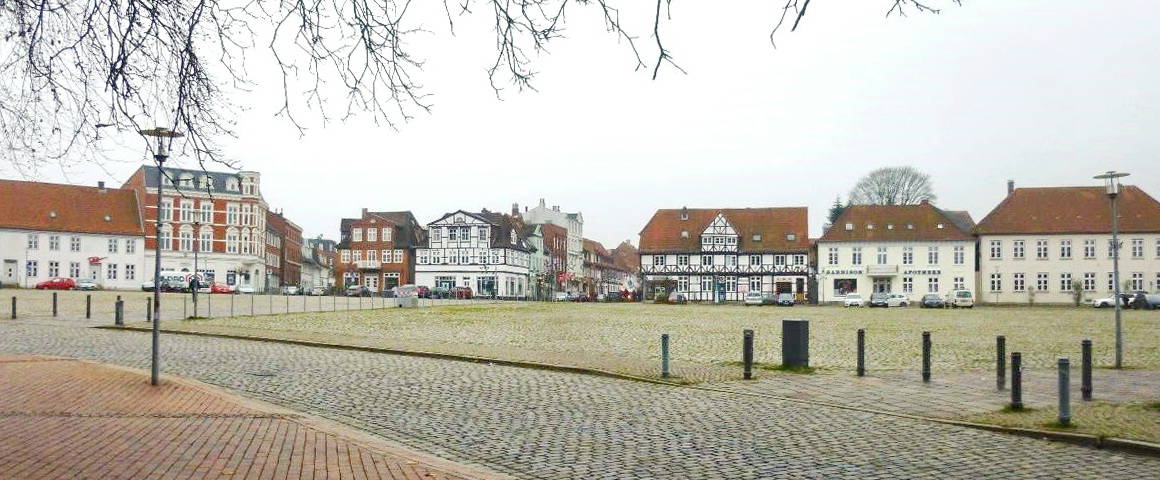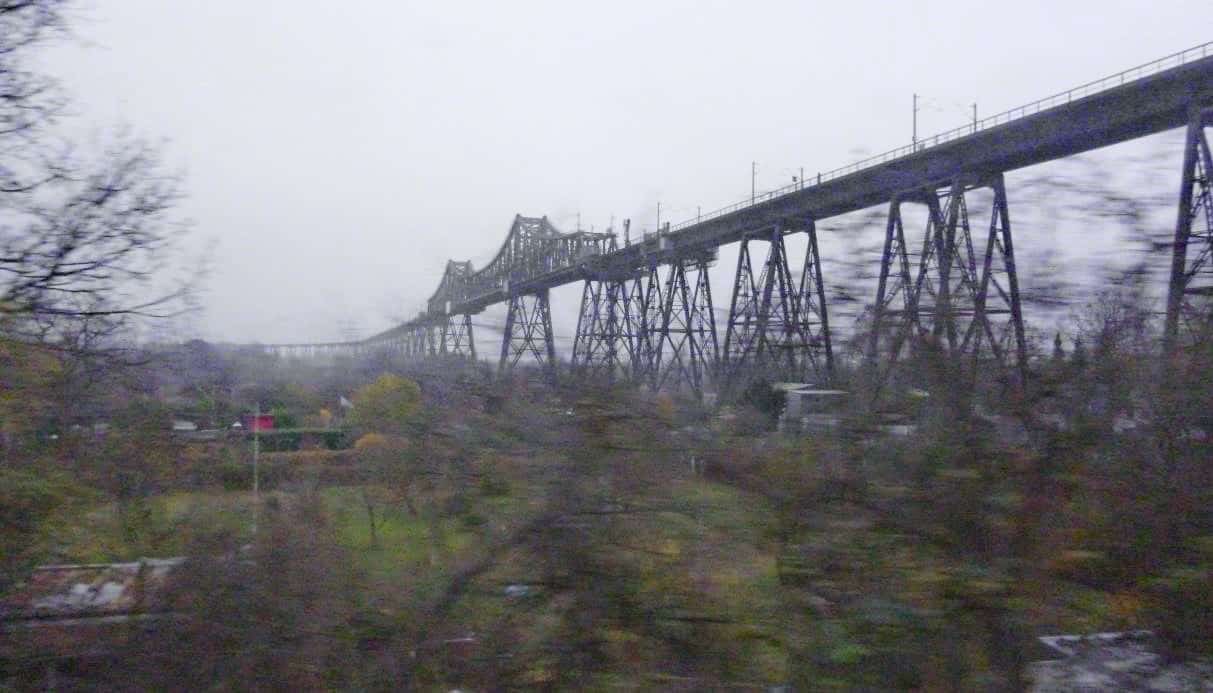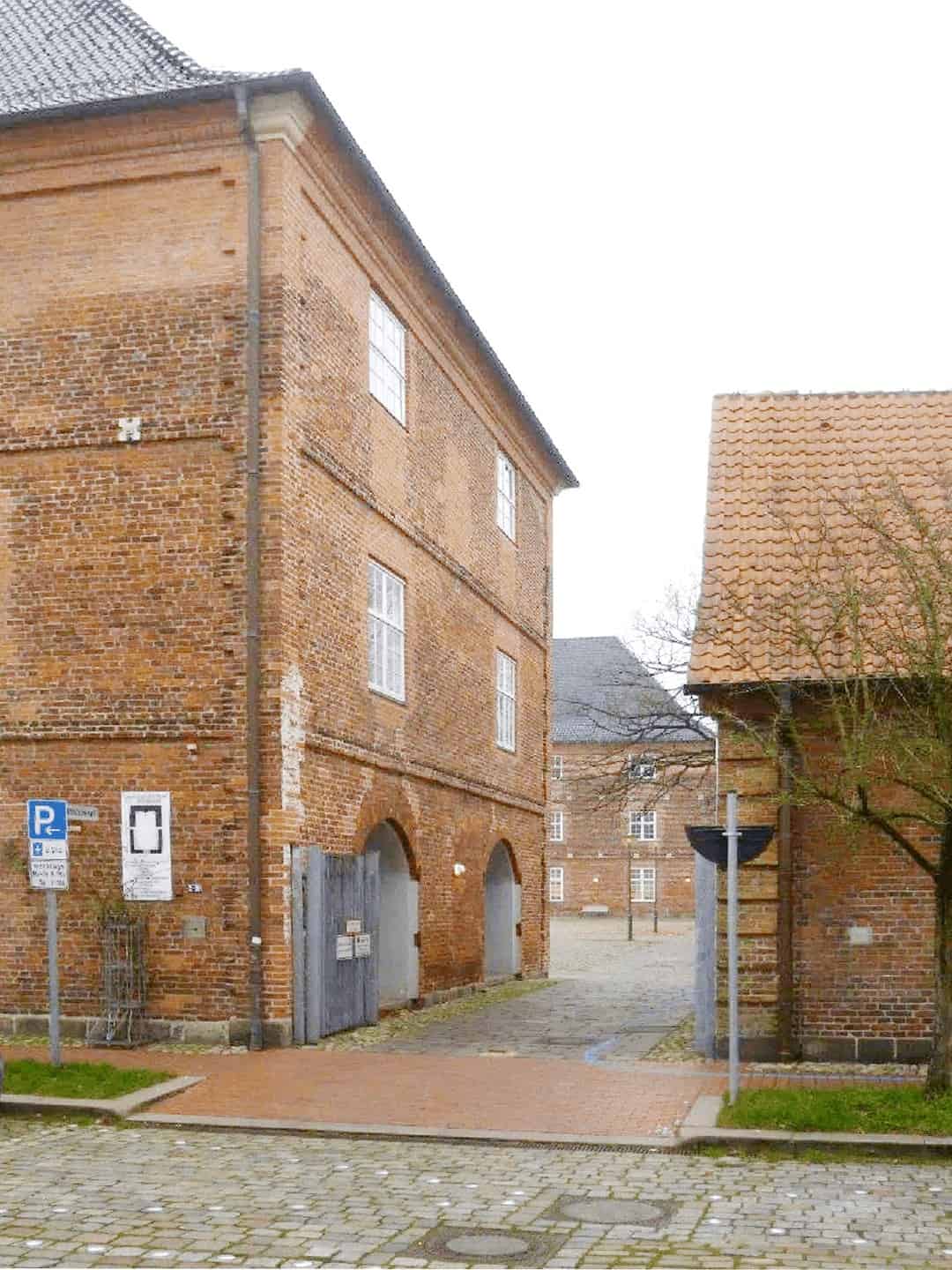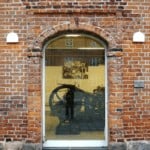From our Australian correspondent Jürgen Wegner, editor of The shadowland newsletter, Eastwood, New South Wales, Australia. First published in The shadowland newsletter, n° 105, January 2020.
There is seemingly an endless number of printing museums scattered around the world and especially in Germany. But most of these are in the form of historic printing workshops whereby a group of retired printers have tried to recreate a printery from the recent days of letterpress—the 1940s or 1950s. You pretty much see the same arrangement of machinery and equipment wherever you go: a caster such as the Linotype, some presses such as a jobbing platen and the obligatory Heidelberg, a more recent guillotine as an older one is too demanding to operate… The idea is to have on hand a quantity of representative printing machinery and equipment so that you can demonstrate printing to the general public and show what a traditional printery looked like. But what is a traditional printery? The mom and pop corner print shop? Traditional printeries were also places where hundreds of printers and compositors were employed with presses far greater and more sophisticated than a Heidelberg. And isn’t phototypesetting and offset printing also just as much a part of our printing history?

Rendsbourg, Germany.
As an unreconstructed bibliotourist—and a printourist, if there is such a word—I visit many places where books and printing are to be found. And each time I try to find a few places which are new and to which I have never been before. Rendsburg seemed worth a visit—though there was not a great deal of detail to go on. The Druckmuseum Rendsburg (Ger., Rendsburg Printing Museum) turned out to be an extraordinary find. I have been visiting cities and towns in northern Germany in recent years including those on the Baltic Sea coast: Lübeck, Rostock and Wismar in addition to Bremen and Hamburg. Kiel is about as far north as I have ever ventured in Germany. The city must have been hard hit during the War for it is a city mainly of new buildings though visually not without interest. And there was also the Weihnachtsmarkt. For a population of only about a quarter of a million, it seems to have an unusual number of good second hand and even antiquarian bookshops. Incidentally, Kiel is also the home of Rudolf Hell famous as the inventor of scanners &c for the printing industries.
Germans are great readers. Obsessive readers. But this is of new books. For some reason, re-used reading looks to be left to those who are retired and/or impoverished. The books in second hand bookshops are always immaculate. Even the books in the many charity bookshops which have sprung up to fill the gap left by the retreat of the traditional second hand bookshops. In Germany these are the Oxfam shops which also sell DVDs, clothing and nick knacks. Kiel has several of such charity bookshops named Lesart which are run by a local charity, die Brücke. If you are a collector of crime and detective fiction or of science fiction—but who collects old books these days?!—these shops are for you. The window display of the Lesart just ‘round the corner from my hotel featured a window full of Perry Rhodans in gleaming bound editions—for one Euro each! For a couple of dollars a book, you can build yourself an extensive library of such genres today. Kiel is a university town and so there are also a few more serious antiquarian bookshops. There was even one which had books on printing history including a number of type specimen books.

The Rendsburger Hochbrücke.
Rendsburg is about an hour’s train trip west of Kiel. You are heading off to visit the printing museum but I can see that there would be many tourists who would travel this line for the beauty of the town—as well as just the train trip out! The trains are modern though perhaps there are steam trains out on occasion? Northern Germany is flat open country and so there are no great features to be seen—until you approach the town of Rendsburg. This is on the other side of the Kaiser Wilhelm Kanal (now the less evocative
Kiel Kanal), a canal built to facilitate trade and shipping. Instead of the expected option of a cantilevered bridge which opens when there is shipping, perhaps there was too much traffic or insufficient room. The canal is crossed via a spectacular bridge—the Rendsburger Hochbrücke—which rises high above the local countryside and gains this height by means of a dramatic long circular approach—the Rensburger Schleife (Ger., Rendsburg Loop). You think you are heading in the wrong direction. You think that you are off on a journey through the countryside. Until you start to climb and climb and then are speeding along and across the canal at great height. The bridge is also notable for its transporter bridge[1] whereby a section of roadway moves from side to side to allow ships to pass underneath. The locals are understandably proud of this engineering marvel of two and a half kilometres in length—the longest railway bridge in Europe—which began construction in 1911. It was completed in 1913.
The town of Rendsburg is itself quite small—less than thirty thousand in population—and its railway station far from impressive. This is on the fringe of the Altstadt at the heart of which is a large but irregularly shaped town square—which, in reality, is an old parade ground. For Rendsburg has a military past. Which is odd because unlike Kiel, the town seems largely unscathed by the War. Germany may be one country—now one reunited country—but it is really many countries combined into one federation. There are countless regional dialects with most people speaking several forms of German language as well as regional landscapes, cuisines, cultures and architecture. I’d just been to the small town of Wolfenbüttel—the world-famous Herzog August Bibliothek—and this is pure and unashamed picture book Germany. And yet, Rendsburg is no less a picture book Germany though more reminiscent of the style of architecture in, say, the Netherlands. Buildings were constructed with materials to hand and so here you have buildings made of brick. The whole town seems to be a living museum of the most various of large brick constructions, often in unrendered bare red brick, some going back to the sixteen-hundreds. Rendsburg is well worth visiting for the architecture alone.

Entrance to the Druckmuseum Rendsbourg.
The Druckmuseum Rendsburg itself is in what used to be an old munitions store—think muskets, gunpowder and cannon balls. This complex is a very large one and it is in the form of an enclosed square made up of three-storied buildings, some of which are still Bundeswehr (Ger., Army). The main central building has been converted into a cultural centre—the Kulturzentrum Rendsburg—which houses the town library, the museum and a large number of offices of cultural institutions. You approach the Museum through the historic townscape, across a very large parade ground and then enter the cultural complex via a narrow passageway. In front of you, the large complex of the former military installation. Unfortunately, I was travelling late in the year and museums tend to wind down as the weather gets colder. It was a balmy two degrees—excellent travelling weather. Also, it was a Sunday, the bonus being that entry was free. Apart from myself, I saw only two visitors and that was a mum and her young son, both of whom looked to be filling in time.
How do you create a museum? What should a museum represent? I am always looking for innovative thinking. There are plenty of museums to be found everywhere which feature ancient wooden hand presses, iron hand presses, even a lengthy row of cylinder presses showing their development from Koenig to the turn of the century. Post 1900, that is. Why don’t we have printing museums which celebrate just offset printing or a Museum of Phototypesetting? Or even screen printing or wallpaper printing? Printing museums mostly give you the feeling of repetition. Here the museum is on the ground floor—weight is always a factor—and in the form of an L-shape with a large general collection at the beginning, then a section twice that space which contains the machine room as well as a small workshop for demonstration classes. At the time of my visit—a Sunday morning—the workshop was showing a group only of young girls the process of printing linocuts. Demonstrated by a group only of women.

The general, introductory section is there to familiarize visitors with the development of the processes involved in printing. After an introductory film on Gutenberg, the very first display—to the right—is a compositors’ room (Handsatz) containing rows of type cabinets and frames. On the opposite side, a number of proofing presses from the simple to the complex and including a Korrex used to demonstrate printing from a block with a portrait of Gutenberg. This is followed by more modern typesetting methods (Maschinensatz) with casters such as the Linotype Model 4a and a more modern Delta Model 54 but also the Typograph from ca. 1930—including a display of additional mats. These are all static displays though I think a demonstration of typecasting on a Typograph would certainly impress even the most jaded visitor.
Around the corner there are some of the more modern machines on display such as the giant repro cameras used in the process of creating images on film from which printing plates can be made. On display, a Falz & Werner, Leipzig, repro camera (ca. 1910), a
Hohe & Höhne, Leipzig, (ca. 1920) to A1 size and a Klimsch vertical camera (ca. 1950). Reprography is an important part of printing history. There is also a Rotatest as used to proof the curved printing plates that are made for use on large cylinder presses. But there are far more modern processes to be seen—something which makes this museum stand head and shoulders above most. The general static display section includes a large section on phototypesetting (Fotosatz) with such things as a Diatype on display as well as Diatronic, Diatext, Diamat consoles. There are even scanners such as an early Hell scanner, a Hell Chromograph C285 colour scanner (1967) and the Hell Klischograph K150 as well as the more modern Heidelberg Nexscan F4200 and Heidelberg Tango (1997) scanners. Also a Scantext 1000 console with two PC terminals and type cassette unit by Scangraphic Dr Boger on display. Dr Rudolf Hell—a native of the nearby Kiel—helped revolutionize printing through his numerous inventions and he is given due credit for this in the museum’s displays. There are even computer consoles and an Apple.
For me, the spectacular is just around the corner. This is in the larger section in the Museum called the Machinensaal (Ger., Machine Room). So-called because this is where there is an historic selection of late nineteenth to modern printing presses on display. The Machinensaal name is due to the fact that most of these presses are used to demonstrate printing as done at a particular time. Many of these are large cylinder presses—and how many times do you get to see something like a 1906 sheet-fed Victoria cylinder press or the huge Rockstroh Werke, Heidenau, cylinder press in operation? Well, not on a cold Sunday morning in November but it must be heaven to be here in warmer times and to see a half dozen or so presses in operation. I confess, I immediately fell in love with the Victoria Front but there is plenty of other eye candy to be getting on with such as:
- A Schnellpressenfabrik Heidelberg platen.
- A small Maihak proofing press.
- Two large Max Simmel, Pforzheim, proofing presses.
- A Mergenthaler Ideal-Säge (planer).
- A Hamba type slug planer.
- Kreisbewegungsmaschine (as in the revolutionary so-called planetary or Planeta drive?) used in larger printeries and manufactured by Koenig & Bauer, no. 2746 (1879), as used by the Kloster Oberzell (Ger., Oberzell Monastery) in Würzburg.
- The smaller Automatic Druckmaschinenfabrik Frontex Automatic Model A sheet-fed press.
- A small Johne Monopol jobbing platen press.
- An A. Hamm AG, Frankenthal, Pro-Patria small hand-fed sheet stop cylinder press (1890s).
- A J.G. Schelter & Giesecke, Leipzig, automatic feeder stop cylinder press (1920s).
- But also a Rotoprint Sprinter small offset press as well as their R45K.
- An August Fomm embossing press.
- My absolute favourite would have to be the big Victoria Front cylinder press, Vic-toria Heidenau, Rockstroh Werke, Heidenau, which is one of the presses in useand which must be a sheer joy to watch. It is used here to print the text of pages from the Gutenberg bible.
- Several baby benchtop platens including one by F.M. Weiler and the tiniest, a Model B3 by B. Grauel & Co.
- An A. Hamm Act. Ges., Heidelberg, cylinder press, no. 1940 (1899).
- A lithographic (stone) printing press by Rudolf Becker, Leipzig (ca. 1900).
- An A. Hogenforst, Leipzig, Ideal iron toggle hand press (ca. 1930) which is unus-ual for it is painted grey—presses are always just black—and has its toggle mechanism chrome plated!
Many of the above presses bear the plate of their distributor: Graphische Union (Hermann Twellmeyer), Hamburg. There are also some less obvious little gems tucked away between the major machinery and equipment:
- A display cabinet of early printed books.
- A small-scale replica model of Gutenberg’s printery.
- A display board of large early twentieth century advertising stickers.
- A highly sculptural cast iron stereo caster plus mould.
- A printers’ trolley as made for conveying the heavy cast ingots for the Linotype (Grakfort?, Melsungen).
- A more modern Polytype ingot caster by Josef Funk KG, Karlsruhe.
- You may be taken in by the beautiful form of the Typograph but hidden in plain sight, an unusual stand which looks to be an umbrella stand? It is, in fact, a rack for storing printing rollers—which you never store flat on a surface. The top of the stand is for holding small sheets of paper for hand feeding a platen.
- The myriad of small tools used in the operation and maintenance of printing machinery.
- A separate display on the modern office, today and yesterday.
- Display cabinets of smaller items such as tubs of printing ink (Hallefarben from the Hallesche Farben- und Druckfarben-Fabrik, Halle/Salle) and even a tube of Gebr. Schmid “0,5 kg Tonfarbe-Grau 8/5060 Buchdruck” printing ink.
- Printers create waste—waste paper. There are usually large bins as such scraps are always recycled. Even by those environmentally challenged because waste paper is worth money! Behind supermarkets these days you see huge containers with hydraulic presses for compacting boxes and papers—waste paper can be bulky. On display here is a small office compactor (Papiersammler D.R.G.M. by Gebr. Lödige, Paderborn) whereby you could recycle small quantities of paper from the printery while at the same time compacting them into bales via a hand operated large screw press.
- Not forgetting a couple of small wooden forme trolleys.
- The ink manufacturer Berger & Wirth is represented by a series of four old framed colour prints showing the work in a printing ink factory, the production of composition rollers, &c, all done in a humorous vein.
Museums need to attract customers in these days of the God of the Bottom Line. And so, there are all kinds of add-on products which museums must engage in. Such as workshops (see comments above about the lino cutting class). The workshop here is a functional space. A huge work table, chairs. Printing seems to be done on a massive Krause arming press (embossing press), for its convenience. But good use is also made of the available wall space around this work area in that smaller items of machinery relevant to not print-making but the book production process are here displayed. There are the two embossing presses but also several hand operated guillotines such as an old Dietz & Listing (Leipzig) and a smaller Karl Krause (Leipzig) as well as a modern Ideal, a pin perforator, a dumbbell driven mechanical stapler, an etching press, a paper drill—and you see these rarely: a full-sized folding machine (Nic Reisinger) as well as a proper industrial strength stitcher for sewing printed sections together into a book block.
Why is it that printing museums make so little use of their machinery and the combined talents of so many trained and experienced printing staff? When you visit printing museums anywhere, you rarely see anything printed more substantial than a flyer or a poster. Where are the books?! Surely, if you have at your disposal what is in effect a comprehensive and large commercial printery, you should not just be demonstrating presses but also printing things of a more substantial and enduring nature. Perhaps a series of pamphlets about local printing, paper and type history? The presses are used to print single sheet items and I was delighted to be able to find what looked to be the last three copies of a wonderful illustration of printing on a wooden hand press—printed on the ancient but unidentified iron toggle hand press. But every printed item that was displayed on the presses seemed to be about the Gutenberg, Man of the Millennium celebrations which occurred in 2000, which is twenty years ago now! Has nothing new been done since?
The museum does also provide something unique—a printing outreach programme for schools. Not your normal small printing setup in the back of a van or in a trailer. This mobile printery is a joint programme of the Museen im Kulturzentrum and the Verein Plietsch und Stark, Region Rendsburg, and comes in the form of a small trailer attached to the back of a bicycle. How’s that for innovative thinking. Green printing!
–
Sources, further reading, webliography
Rendsburger Hochbrücke: https://de.wikipedia.org/wiki/Rendsburger_Hochbrücke
Druckmuseum Rendsburg: http://www.museen-rendsburg.de/die-museen/druckmuseum-
sammlung.html
Lütten Druckerei: https://www.shz.de/lokales/landeszeitung/buchdruck-mit-klasse-id21645757.html
[1] Rendsburger Hochbrücke: https://de.wikipedia.org/wiki/Rendsburger_Hochbrücke